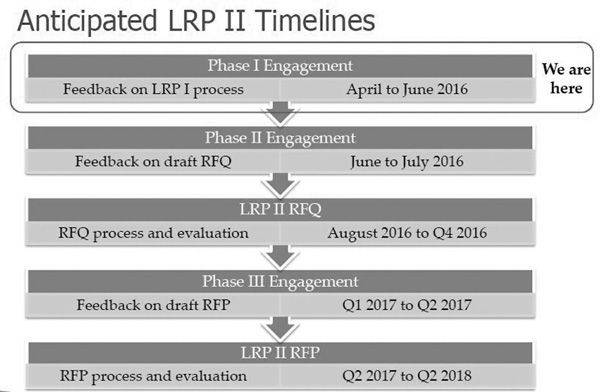Buoyed by the results of the first round of the province’s Large Renewable Procurement (LRP I), the Ministry of Energy has mandated procurement of another 930 MW by May 1, 2018. Minister Bob Chiarelli, speaking at a CanWEA conference on April 5, said, “We are pleased to announce that we are moving forward with an enhanced second phase of the Large Renewable Procurement,” citing new allotments of up to 600 MW of wind, 250 MW of solar, 50 MW of waterpower and 30 MW of bioenergy. The Minister also took pains to remind the industry that significant work and uncertainty lies ahead in ensuring proper community engagement takes place for all new renewable energy projects.

“This announcement provides additional assurance of a stable business environment and will help to encourage the growth of a healthy productive renewable energy industry in this province,” said APPrO Executive Director Jake Brooks. “The LRP procurement program is well-understood, tested, and although improvements are certainly possible, it is capable of producing more attractive competitively priced renewable energy than ever before.”
Two key themes were emphasized by Minister Chiarelli: the importance of maintaining an active and constructive dialogue with host communities, and the need for collaboration to continue improving the procurement process. Early in his speech he highlighted the importance of work done to date in “striking a balance between early community engagements and achieving value for ratepayers.”
Minister Chiarelli said, “It is important to note that this next phase will continue to put strong weighting on local support, and it will challenge you to roll up your sleeves and start a fresh and open dialogue with local communities, First Nations and municipal leaders.” In reference to both new projects under LRP II and the yet to be built projects contracted under LRP I, he said, “Appropriate and meaningful engagement with the local community is necessary.”
Of the 16 successful LRP I projects, more than 80 percent included participation from one or more Aboriginal communities, including five projects with more than 50 percent Aboriginal participation. More than 75% of the successful proposals received support from local municipalities, and more than 60% had support from abutting landowners, the Minister noted. He then expressed concern about those projects that did not have the formal support of their local community: “For these projects, it is vital that proponents continue to actively engage with municipalities, residents and interest groups as you move forward with these projects and continue to seek different kinds of engagement and support. … [T]here is still much work to be done in these communities and part of that work is maintaining an active and constructive relationship and dialogue with your new neighbours.”
In terms of shaping the procurements ahead he said, “I think it is clear to everyone with a stake in this setor: the collaborative approach works.” He pointed out that with respect to LRP II in particular, “[T]he IESO and the Ministry of Energy will be turning to you again to make sure we’re getting this right and we’re achieving these goals.”
Addressing a central concern of developers, Minister Chiarelli cited one of the key instructions in the directive: “The IESO will post the final RFQ and launch the qualification process by August 1 2016, after taking the next several months to complete consultations with industry.” The directive requires LRP II proposals to be evaluated and selected by May 1, 2018. There is no assurance of a subsequent round of procurement after LRP II. The directive explicitly instructs the IESO not to undertake LRP III or to procure any available or unallocated capacity from LRP I or LRP II.
Analysis by the consulting firm of Power Advisory indicates that significant parts of the province have no area connection capability at this time. Reiterating that uncertainties about connection availability represent “the primary uncontrollable risk for proponents,” they recommend that the IESO “provide the ability for proponents to request a technical feasibility study based on the power system assumptions from the IESO for proposed projects and associated connection points.” They further state that, “[T]he feasibility study should identify an approximation of connection capability at the applicable connection points and a high-level estimate of the transmission system upgrades needed to allow proposed projects to connect (if required). The feasibility study should not be binding on the IESO but should provide important information regarding power system capabilities at proposed connection points.”
For more information see the commentary in the April issue of IPPSO FACTO by Travis Lusney titled, “Alternative Connection Assessment process for LRP II needed.”
Outlining several ways in which renewables have helped to improve the quality of life in Ontario, Minister Chiarelli concluded, “The future for wind and other renewables can only get stronger if we work together to drive price down while building up community engagement.”
